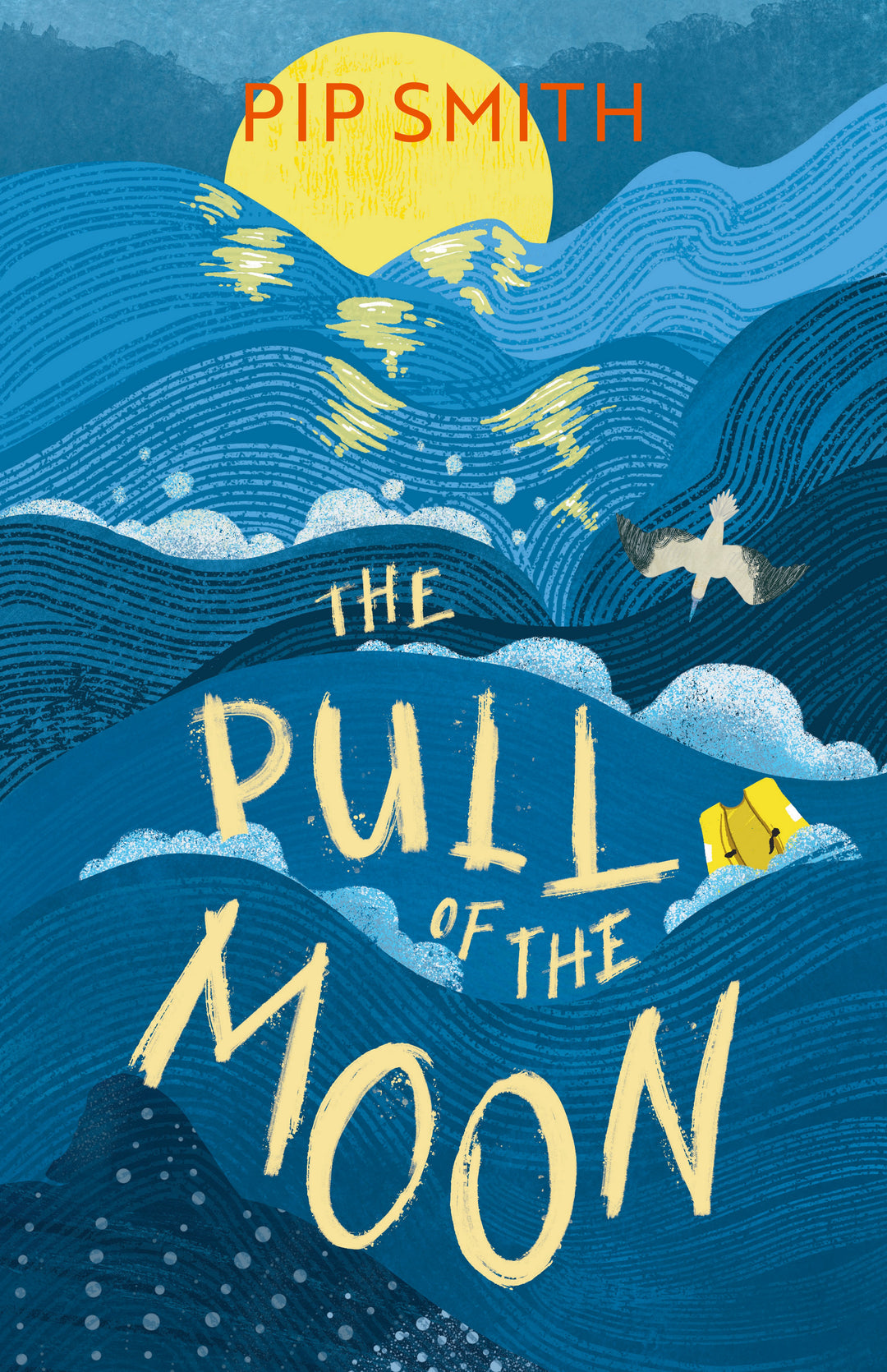 Reviewed by Magdalena Ball
Reviewed by Magdalena Ball
The Pull of the Moon
By Pip Smith
UWAP
$26.99, paperback, ISBN: 978-1-76080-303-2, June 2025
Christmas island, three hundred and sixty kilometers south of Indonesia, is the unique setting of Pip Smith’s latest book The Pull of the Moon. It is a “restless and shifting place” full of distinctive flora and fauna, often called the Galapagos of the Indian Ocean for its diverse ecology – the epic crab migrations, bird rookeries, corals, and fish and an extraordinary place to grow up. The book’s protagonist is thirteen year old Coralie, an only child whose mother is an ecologist looking for the vanishing Christmas Island pipistrelle, a tiny bat last seen on Christmas Island in 2009. I was in a conference a few years ago with Zoos Victoria when we were played a recording of the last pipistrelle sound, and it was sad and sobering to think that this high-pitched echolocation is no longer part of the world we live in. Smith leans into that sensation of loss and helplessness in The Pull of the Moon, providing multiple perspectives, not just on the bat’s extinction, but also a number of social issues that collide on the island, from the broader impacts of climate change to the refugee crisis. These perspectives converge around Coralie, whose is full of hope and energy with a rich imagination, even through her tragic experiences:
The last thing Coralie saw as she closed her eyes was the out-of-place moon—a white sponge dab in a wash of afternoon blue. As the rumble grew louder she tried to pretend she was going there, to that pale dab, but all she could imagine was an old quarry: grey limestone pinnacles and dusty craters. Here and there bright green ferns grew across the wasteland. Nothing grows on the moon, she reminder her imagination but it wouldn’t listen. Now there were yellow buttercups and giant blue butterflies. A pipistrelle was there, echolocating off the other planets int he solar system. (39)
Coralie’s youthful energy is retained even when her mother Hannah, crazed with grief about the pipistrelles, leaves the island for another research project. Coralie is left alone with her father, a dive instructor who struggles to fill the gap that her mother leaves and her friends are growing away from her leaving her increasingly isolated. Everything comes to a point when an Indonesian boat carrying asylum seekers dashes against the rocks near the island and like many of the Island’s residents, Coralie and her father become involved in the rescue operation. The voices of the drowning women haunt Coralie, who is unable to help, uselessly throwing life jackets most of which blow into the sea:
Coralie woke to the keening of women. ‘Help us, please help us’ Their wails cut through the thrashing of coconut palms against the roof and waves against the cliffs and the thrumming of rain against the glass. (110)
This is the real-life Janga disaster that took place on Christmas Island in 2010 in which fifty asylum seekers–adults and children– were killed. Eleven year old Ali and his sister Zahra have their own narrative and point of view and we learn about his journey from Iran, his pigeon Harun, and his relationship with his Baba or grandfather. Ali and Coralie’s connection is subtle and rich, and the way in which their narrative voices overlap is handled with enough ambiguity to leave the reader engaged and intrigued, wondering whose point of view we are really experiencing and what is and isn’t real when their stories begin to converge.
Throughout the novel, Smith handles the numerous perspectives in this book smoothly, moving through Hannah, to Ali, Zahra, Ali’s father, and even a range of non-human perspectives like a variety of birds, crabs, turtles and even the ocean. These narrative voices weave in and out of the sounds of Christmas Island, from the clack and scuttle of crabs, the roar of the island itself, the crawling sounds of the African snails and bugs on the forest floor to the ocean waves crashing against the shore. Everything on the island creates a unique sound reminding us of that last pipistrelle call. This equates the human and the non-(or more-than-) human in a way that hints at perspectives that cannot be translated so easily into language. It’s often written in anthropomorphic ways but there is a hint that things might be the other way round – that the human also ultimately belongs to the sounds and shapes of the earth and sea:
The ocean was furious. Waves tall as houses pounded the cliffs and surged back out to sea with so much force the water in their wake frothed and roiled like suds in a washing machine. (112-113)
There is a magical quality to the island and the sounds, with its seasonal and tonal changes – the turtle and crab hatchings and migrations, the moon phases that make up the section headings, and the way in which the perspectives shift around the island, moving from place to place and across time. Smith’s writing is lovely throughout the book, even when things are dire, and she doesn’t tie everything into a neat parcel.
There is so much loss in The Pull of the Moon. The pipistrelle cannot be saved. There are bleached corals on the beach which will not come back. The asylum seekers who survive the shipwreck are further traumatised by detention. Coralie and her mother both end up doing some harm in their efforts to help. But in the cycles and sounds which continue even without human voices, and in the promise that comes with connection–friendship, forgiveness, love–there is always hope. The Pull of the Moon is a beautiful book that covers a lot of ground with care and deep intelligence. It is marketed as a young adult book but it will appeal to readers of all ages for its deep complexity and its multi-layered engagement with the world we’re living in now.